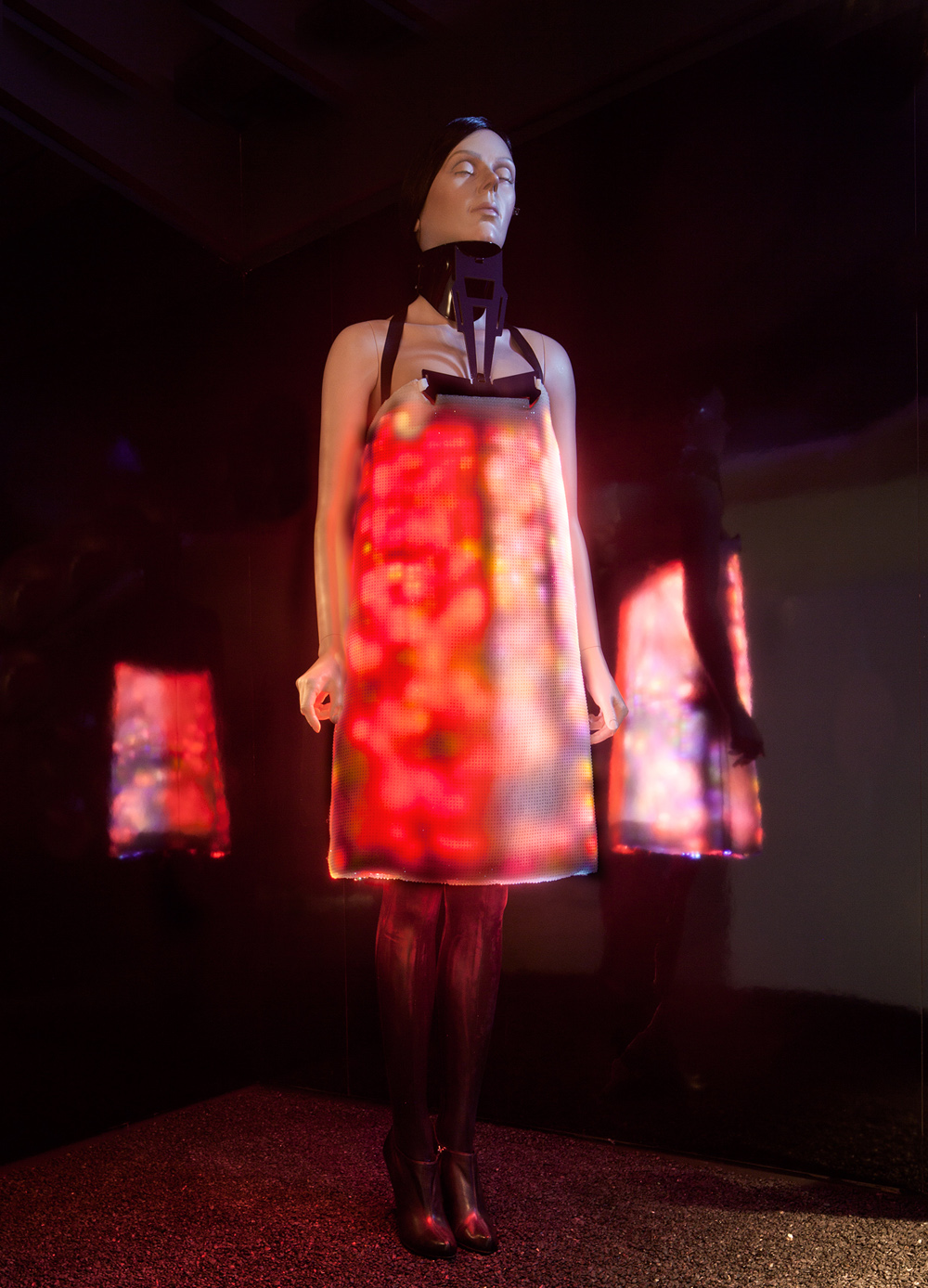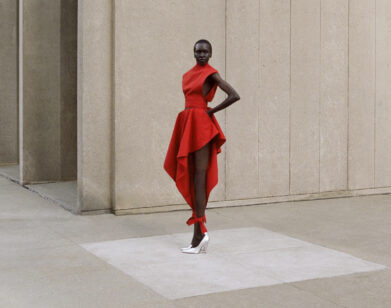Lights On for Chalayan

Over the past 16 years, Hussein Chalayan has created an extensive body of fashion about modern phenomena, exploring everything from ethnicity and cultural detachment to air travel, interior design, and geography. Each collection of his garments is imbued with a higher concept, sometimes literally so—with significant examples including his fiberglass “Aeroplane” dress from 2000 and his LED-embedded collaborations with Swarovski in 2007.
This month, “Fashion Narratives,” an exhibition of Chalayan’s fashion work, curated by Pamela Golbin, opened at the Musée des Arts Decoratifs in Paris, which has hosted retrospectives of the fashions of such luminaries as Madame Vionnet, Sonia Rykiel, and Jean Paul Gaultier. “Being a part of exhibitions is not a burden; it’s another way for an independent label such as mine to reach a larger audience by exposing them to my whole body of work,” says the designer. “It doesn’t change the way that I approach my work, because it’s always the same whether I am designing a dress or coming up with the concept for a film or an installation, it always starts first with an idea.”
Across two expansive floors, Mr. Chalayan’s highly constructed garments are posed in a succession of unusual environments behind glass vitrines. “There is a kind of chronology or sections, which perhaps helped to create chapters,” which is reflected in the catalogue. “The book is personal which illustrates more process than most books, and to share the evolution of the Chalayan brand.”
In particular, the latex-molded minidresses from the Spring/Summer 2009 “Inertia” collection never fail to impress, with car-crash scenes hand-painted on their sweeping peaked hems. Elsewhere, sensual, beaded dresses are draped over a coven of crouching nymph-like mannequins, and others are framed flat like envelopes on a wall. A collection of “Airmail dresses” is crafted from the synthetic paper Tyvek. The designer highlights the showcase of his Spring 2011 season, “Sakoku,” which is Japanese for “locked country,” a collection inspired by Japan’s mid-19th century lockout policy on foreign relations.
Chalayan’s obsession with the moving image is gratified with a multitude of screens dotting the walls of the space. They loop films that the designer has created over the years.






